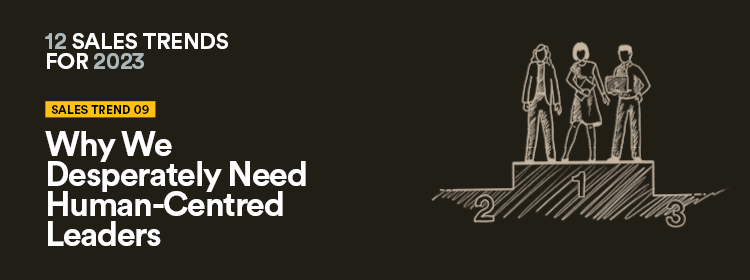
Sales Trend 9 of the Barrett 12 Sales Trends Report for 2023 is about the rise of human-centred leadership principles and practices.
By guest author DUANE ATTREE // former Managing Director of POTENTIAL(X), Chief Commercial & Development Officer, BEAMTREE and now EXPLORER AT .....


New Article Email Notification